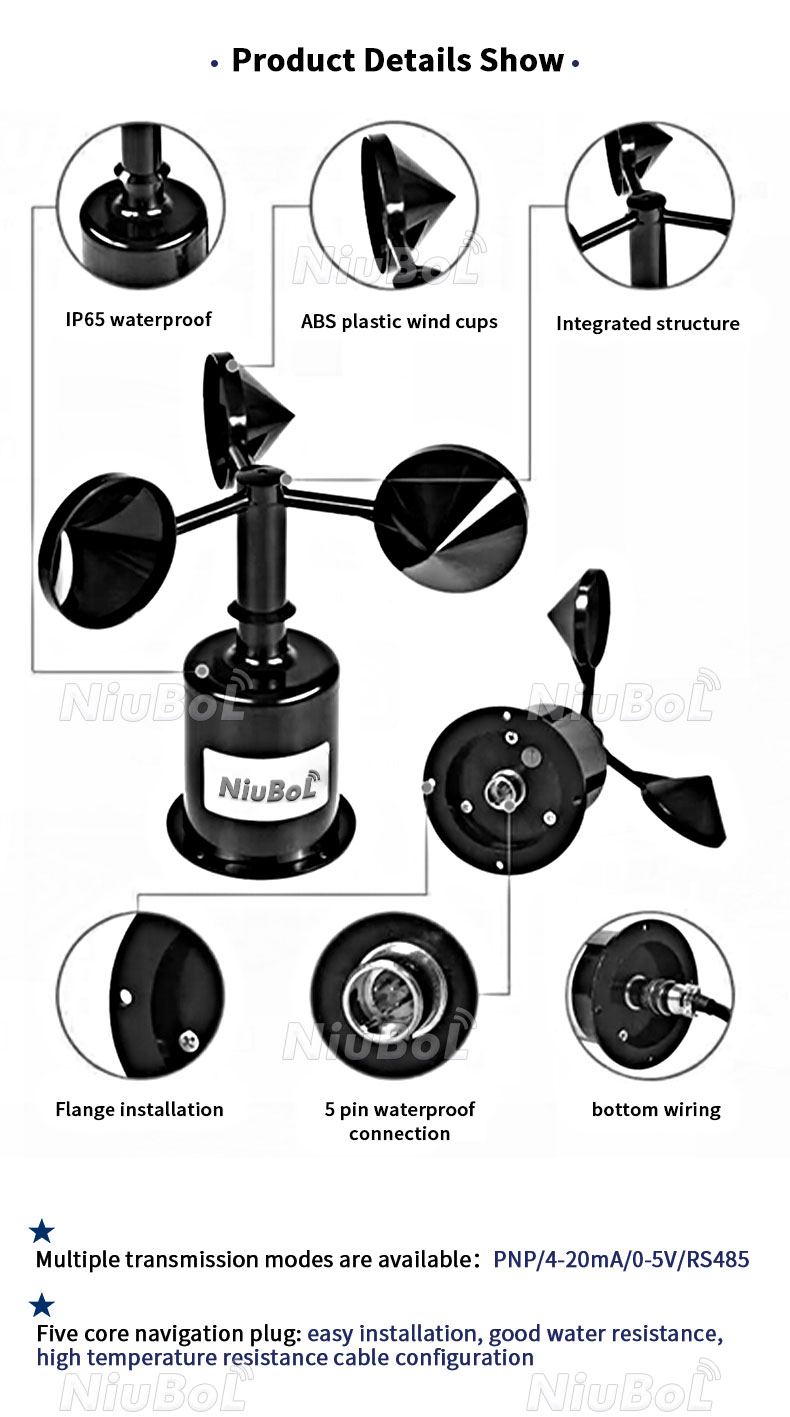

— Blogs —
—Products—
 Consumer hotline +8618073152920
Consumer hotline +8618073152920 WhatsApp:+8615367865107
Address:Room 102, District D, Houhu Industrial Park, Yuelu District, Changsha City, Hunan Province, China
Product knowledge
Time:2024-02-25 20:40:18 Popularity:1539
Ultrasonic wind sensors and mechanical wind sensors are two different technologies used to measure wind speed and direction. Each has its own advantages and disadvantages, and the choice usually depends on the specific application and the required accuracy.
Ultrasonic wind sensors use high frequency sound waves to measure wind speed and direction. They emit a beam of sound waves into the wind and use the Doppler effect to detect the change in frequency as the sound waves are deflected by the moving air.
- Can operate in extreme temperatures and harsh environments.
- Relatively short response time, providing rapidly changing wind speed and direction data.
- No moving parts, reducing the risk of mechanical failure.
- Response time: Ultrasonic wind sensors have a faster response time than mechanical sensors, thus providing faster and more accurate real-time data on changes in wind speed and direction.
- Cost: Ultrasonic wind sensors tend to have a higher upfront cost than mechanical sensors due to their advanced technology and accuracy. However, the initial investment may be offset by long-term cost savings from reduced maintenance and improved accuracy.
- May require calibration and are sensitive to atmospheric conditions such as temperature and humidity.
- Installation may be more complicated due to the need to protect the sensor from external elements such as rain, snow and dust.
Mechanical wind sensors (e.g. anemometers) usually have a rotating cup or vane that rotates with the wind. The rotation is then converted into a wind speed reading, often using a gear mechanism or magnetic pickup to convert the rotation into a digital signal.

- Often more affordable than ultrasonic sensors.
- Simple design with fewer components for ease of maintenance and calibration.
- More durable and rugged for outdoor use in all weather conditions.
- Slower response time than ultrasonic sensors.
- More prone to wear and tear, especially in extreme temperatures or abrasive environments.
- May require periodic maintenance such as lubrication or replacement of worn parts.
In summary, however, ultrasonic sensors are often preferred for their high accuracy, reliability, durability, and low maintenance requirements, especially in critical applications where accurate wind data is required.
In summary, while both ultrasonic and mechanical wind sensors have their own advantages and applications, ultrasonic wind sensors are often preferred in applications where accuracy and fast response times are required and where the environment is not too harsh. Mechanical wind sensors, on the other hand, are suitable for applications where affordability and durability are more important than fast response time. The choice between the two technologies should be based on the specific requirements of the application, including the need for accuracy, operating environment and available budget.
Prev:What are the benefits of smart irrigation system using IoT?
Next:What is soil moisture sensor for automatic irrigation system?
Related recommendations
Sensors & Weather Stations Catalog
Agriculture Sensors and Weather Stations Catalog-NiuBoL.pdf
Weather Stations Catalog-NiuBoL.pdf
Related products
 Combined air temperature and relative humidity sensor
Combined air temperature and relative humidity sensor Soil Moisture Temperature sensor for irrigation
Soil Moisture Temperature sensor for irrigation Soil pH sensor RS485 soil Testing instrument soil ph meter for agriculture
Soil pH sensor RS485 soil Testing instrument soil ph meter for agriculture Wind Speed sensor Output Modbus/RS485/Analog/0-5V/4-20mA
Wind Speed sensor Output Modbus/RS485/Analog/0-5V/4-20mA Tipping bucket rain gauge for weather monitoring auto rainfall sensor RS485/Outdoor/stainless steel
Tipping bucket rain gauge for weather monitoring auto rainfall sensor RS485/Outdoor/stainless steel Pyranometer Solar Radiation Sensor 4-20mA/RS485
Pyranometer Solar Radiation Sensor 4-20mA/RS485
Screenshot, WhatsApp to identify the QR code
WhatsApp number:+8615367865107
(Click on WhatsApp to copy and add friends)
